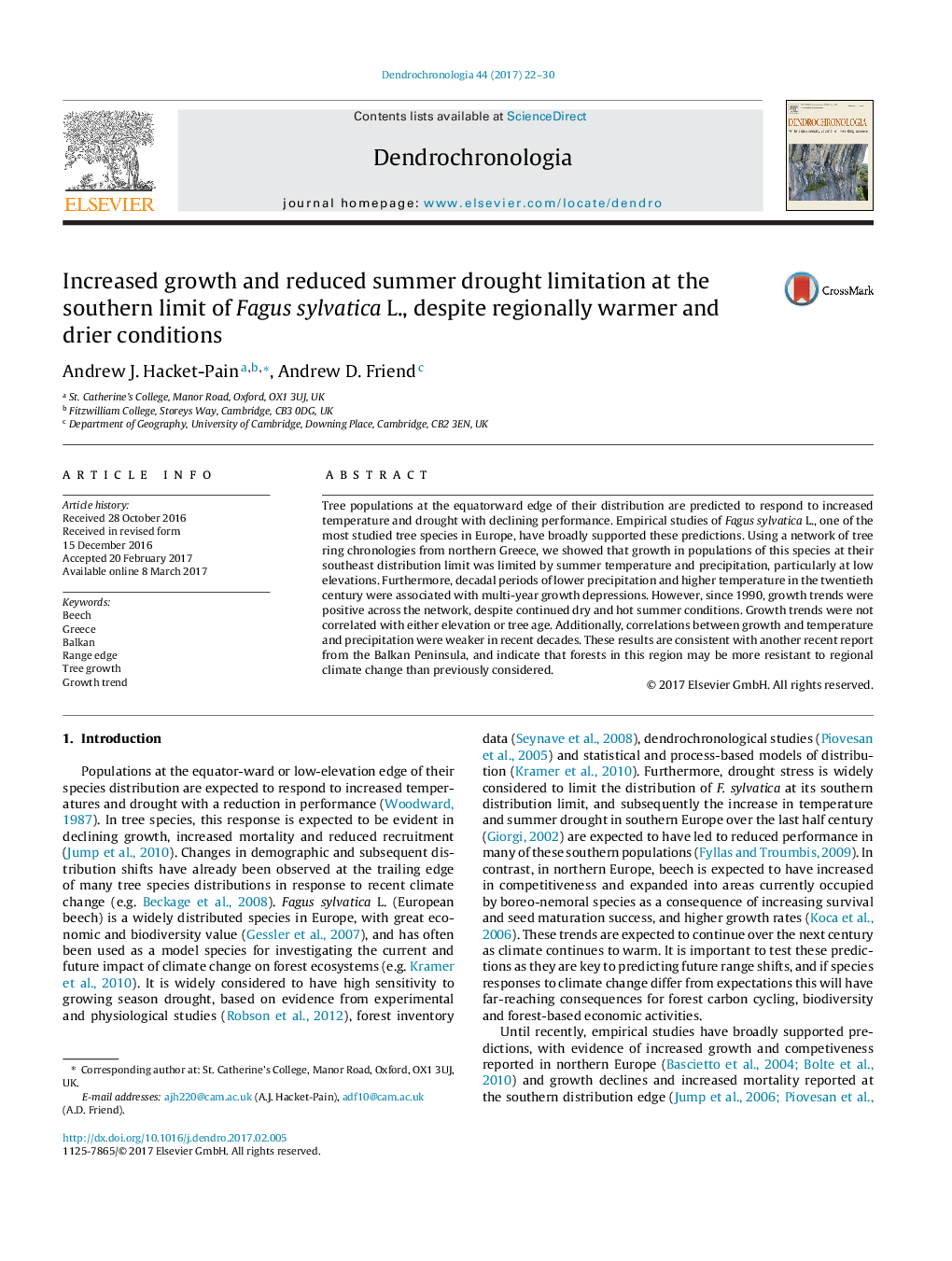| Article ID | Journal | Published Year | Pages | File Type |
|---|---|---|---|---|
| 6458932 | Dendrochronologia | 2017 | 9 Pages |
Tree populations at the equatorward edge of their distribution are predicted to respond to increased temperature and drought with declining performance. Empirical studies of Fagus sylvatica L., one of the most studied tree species in Europe, have broadly supported these predictions. Using a network of tree ring chronologies from northern Greece, we showed that growth in populations of this species at their southeast distribution limit was limited by summer temperature and precipitation, particularly at low elevations. Furthermore, decadal periods of lower precipitation and higher temperature in the twentieth century were associated with multi-year growth depressions. However, since 1990, growth trends were positive across the network, despite continued dry and hot summer conditions. Growth trends were not correlated with either elevation or tree age. Additionally, correlations between growth and temperature and precipitation were weaker in recent decades. These results are consistent with another recent report from the Balkan Peninsula, and indicate that forests in this region may be more resistant to regional climate change than previously considered.
